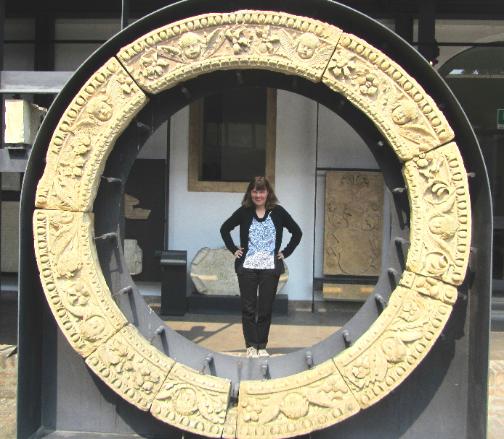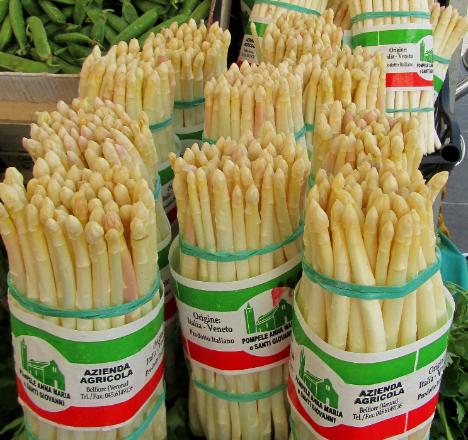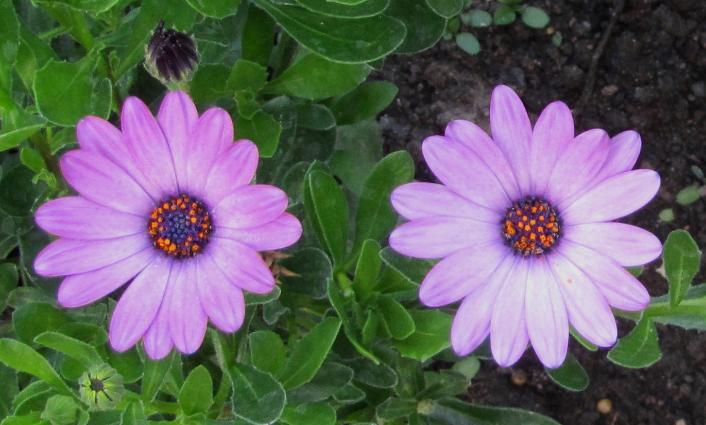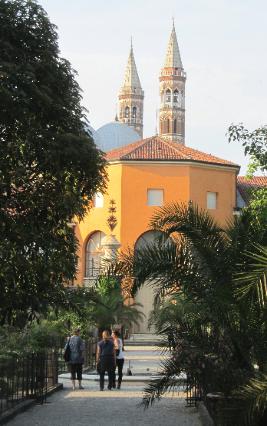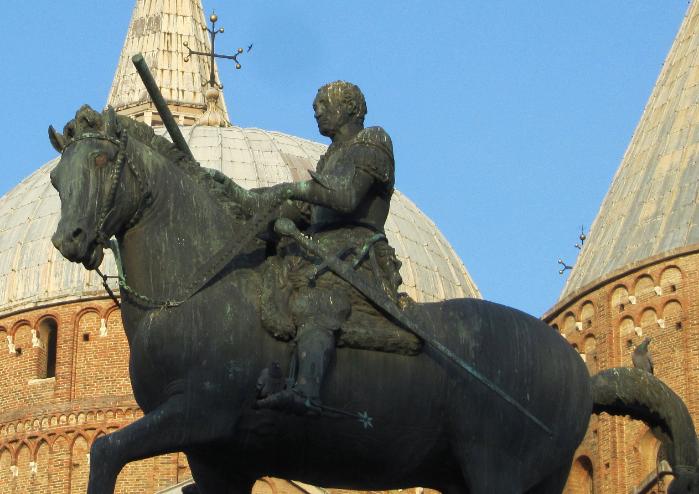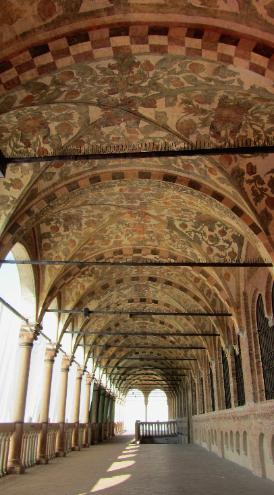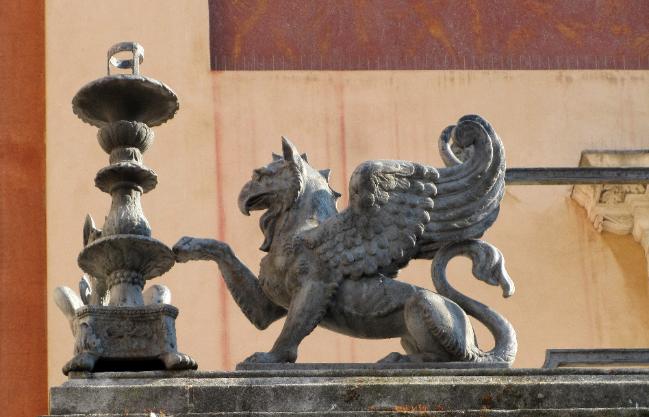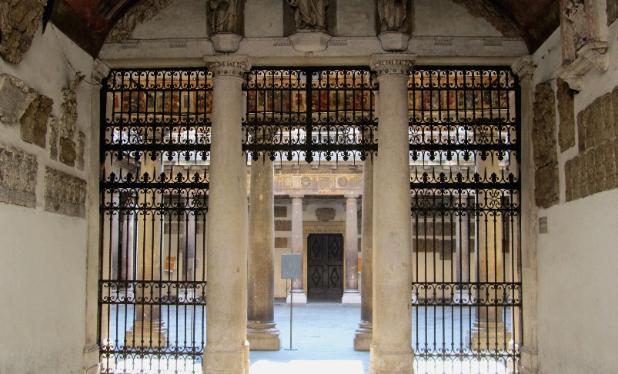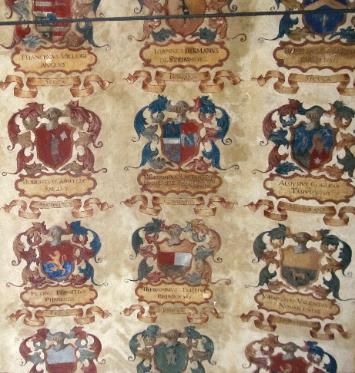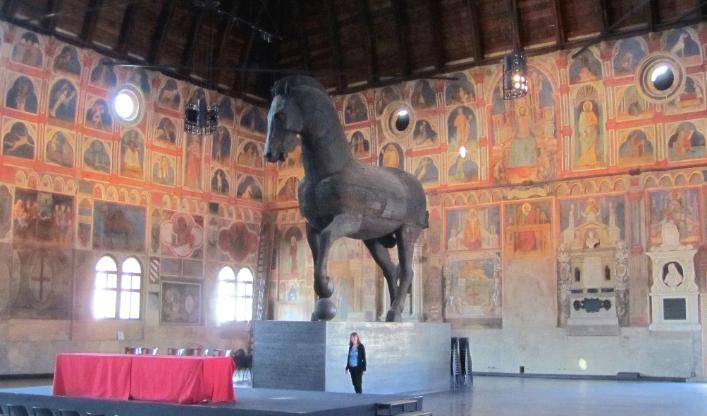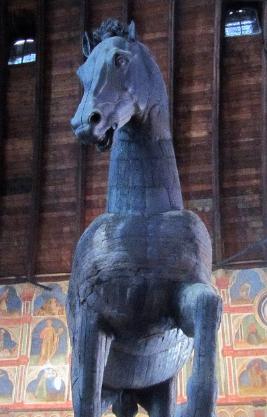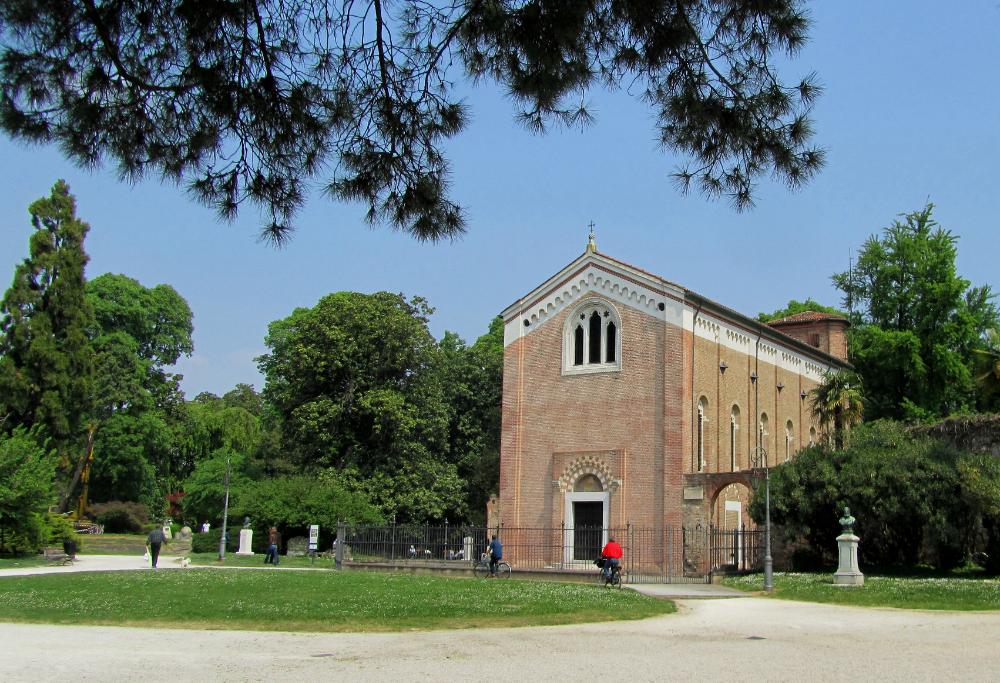
Where We Be
| Padua, Italy |
Padua is often overlooked by tourists in favor
of her hard to compete with sister Venice just
to the east. But Padua has a lot to offer in her
own right: a pedestrian-only historic center,
Europe's largest oval plaza (Prato della Valle),
and Renaissance art galore.
Without question the blockbuster attraction is
Scrovegni Chapel, a Renaissance masterwork
if ever there was one. It's filled with fantastic
frescoes painted by Giotto at the height of his
abilities, from 1303 to 1305. When you consider
the flat, unemotive images that came before
Giotto, it seems like nothing short of a miracle
to see his moving paintings of real suffering,
real joy, and real honest-to-goodness humans
facing tough situations. He was a master at
capturing human emotion: Jesus staring down
Judas; exhausted new father Joseph falling
asleep on his own arm; a huddle of women
trying to comfort Mary. The astonishing images
captured in this one small chapel put Padua on
the map in a big way.
of her hard to compete with sister Venice just
to the east. But Padua has a lot to offer in her
own right: a pedestrian-only historic center,
Europe's largest oval plaza (Prato della Valle),
and Renaissance art galore.
Without question the blockbuster attraction is
Scrovegni Chapel, a Renaissance masterwork
if ever there was one. It's filled with fantastic
frescoes painted by Giotto at the height of his
abilities, from 1303 to 1305. When you consider
the flat, unemotive images that came before
Giotto, it seems like nothing short of a miracle
to see his moving paintings of real suffering,
real joy, and real honest-to-goodness humans
facing tough situations. He was a master at
capturing human emotion: Jesus staring down
Judas; exhausted new father Joseph falling
asleep on his own arm; a huddle of women
trying to comfort Mary. The astonishing images
captured in this one small chapel put Padua on
the map in a big way.
| At Scrovegni Chapel it's what's on the inside that counts -- Giotto's frescoes |
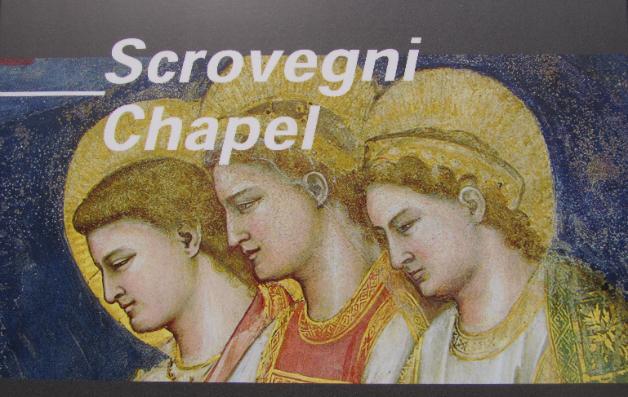
| More than any other artist, Giotto ushered in the Renaissance -- and Padua is the place to come if you want to see his best work |
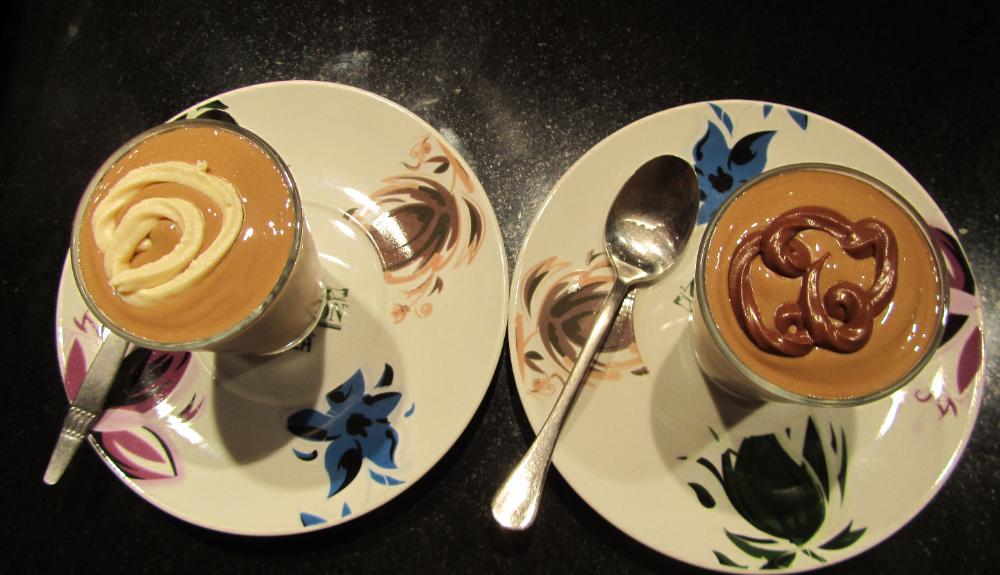
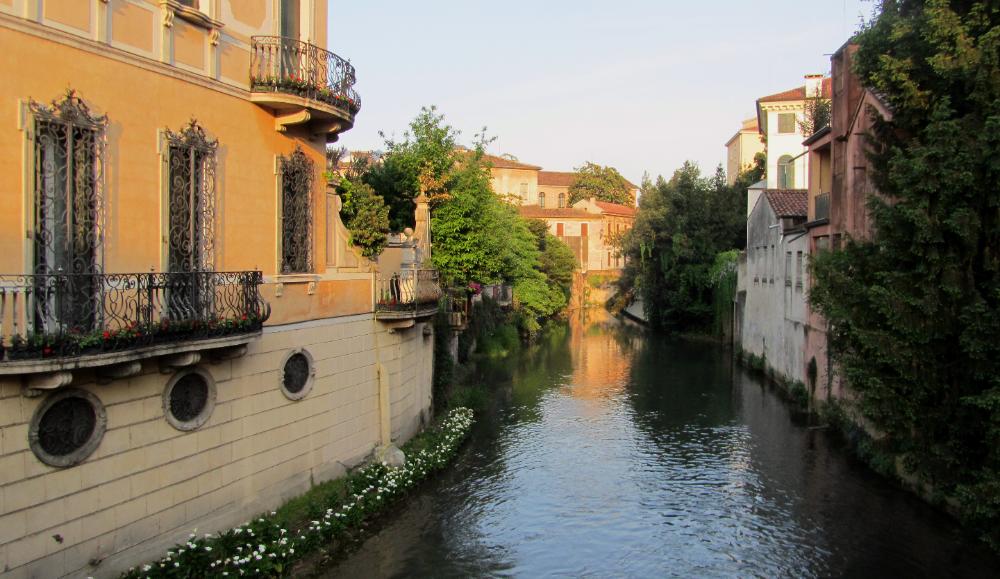
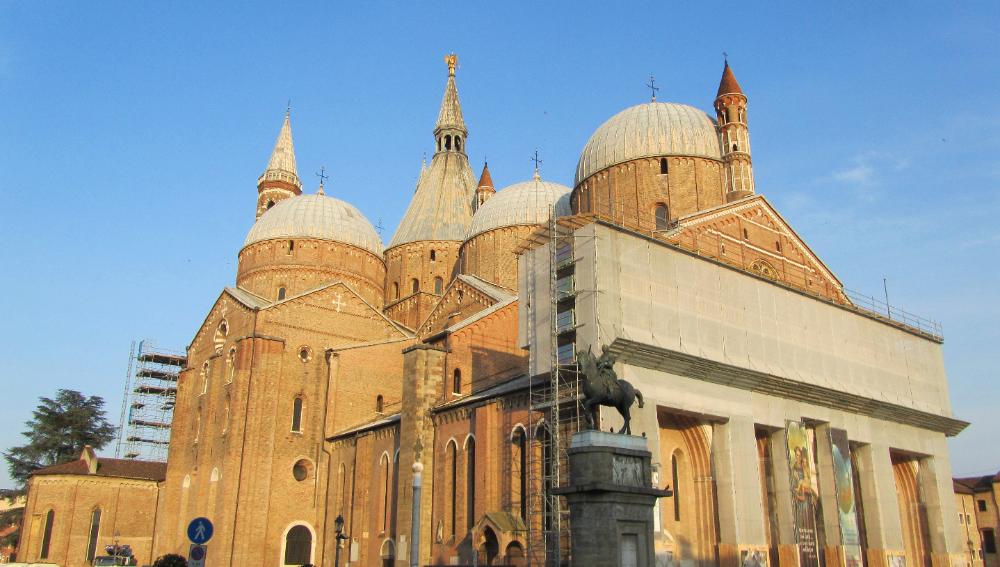
| Fun with Roman ruins at Padua's Civic Museum |
| Prato della Valle is THE place to hang out on a sunny weekend |
| Padua surprises with quiet views like this one in the historic center |
| White asparagus is in season and all the rage at outdoor produce markets |
| Art of a different sort -- iced coffee with swirls of Nutella and vanilla |
| Padua's Orto Botanico is a Unesco World Heritage site because it was one of the first botanic gardens ever (1545!). It focused on collecting and analyzing the medicinal properties of rare plants. |
| The Basilica of Saint Anthony was just across the street from our hotel, the Casa del Pellegrino. We enjoyed hearing its bells toll the hours. |
| This equestrian statue by Donatello is considered by many the first significant bronze statue of the Renaissance |
| Lovely arcade at the Palazzo della Ragione |
| Architectural flourishes -- like this winged griffon on Piazza delle Erbe -- abound in Padua |
| Entrance to Padua University, founded in the 1500s. Copernicus, Galileo, and Casanova all taught here. |
| We were surprised to find this enormous horse inside the Palazzo della Ragione. It wasn't even mentioned in our guidebooks! In medieval times it was used in parades and Trojan Horse re-enactments. |
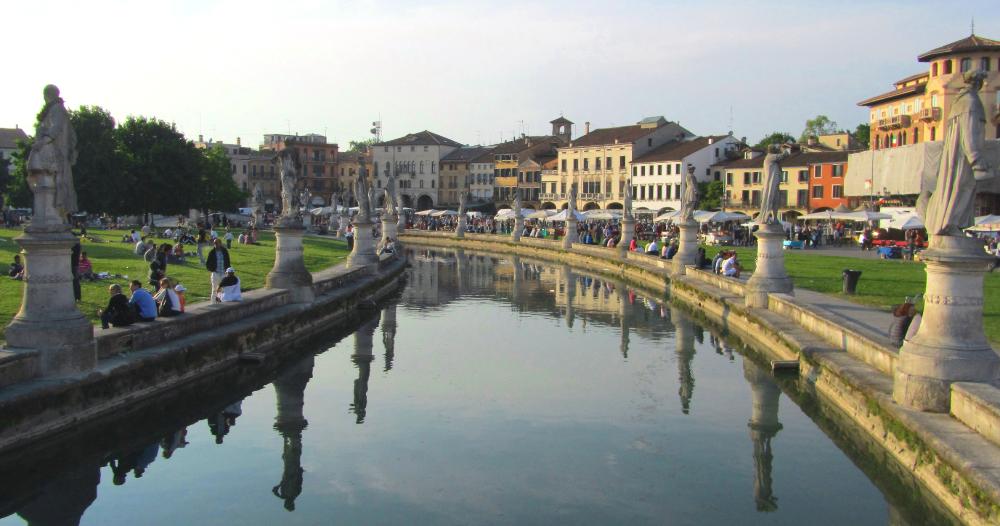
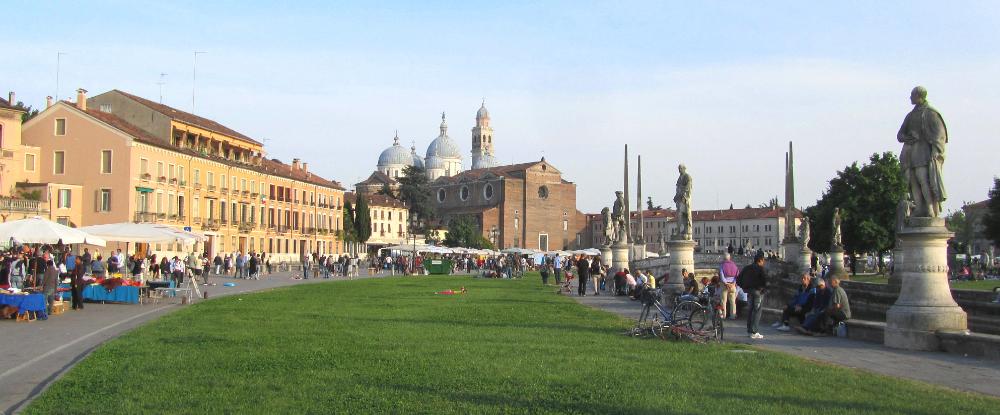
| This is Prato della Valle, Europe's largest oval piazza |
